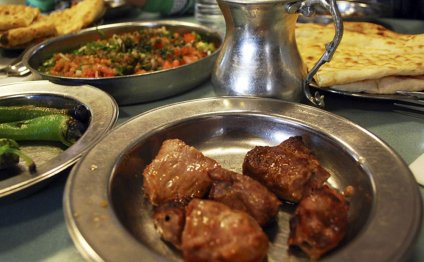
Meat only restaurant
 (BOSTON) - Do you know what class of meat that steak is from your own favorite restaurant - choose, choice, or prime? You almost certainly do not because most restaurant menus supply a bum steer by continuing to keep some or all high quality grades key. That's the conclusion of overview of menus from 17 national restaurant chains circulated these days by ConsumerWorld.org.
(BOSTON) - Do you know what class of meat that steak is from your own favorite restaurant - choose, choice, or prime? You almost certainly do not because most restaurant menus supply a bum steer by continuing to keep some or all high quality grades key. That's the conclusion of overview of menus from 17 national restaurant chains circulated these days by ConsumerWorld.org.
Crucial findings among the list of restaurants inspected include:
- Over 80percent did not reveal the grade of meat on the menu for a few or all steaks.
- The grade of filet mignon - the Cadillac of steaks - was never ever disclosed on any menu.
- Every high-end restaurant failed to reveal the grades of one or more cuts of steak.
- Just three informal dining restaurants revealed the grades of all of the steaks they serve.
"Restaurants are very very happy to brag on menus if they make use of the greatest quality of beef - prime, " commented Consumer World creator Edgar Dworsky. "But when eateries cannot disclose the quality, that forces diners to play ribeye roulette. Whether you are paying $20 or $60 for a steak, restaurants should slice the bull and inform you what you are getting for your money."
The United States division of Agriculture (USDA) has actually three grades of beef commonly found in restaurants: choose, option, and prime, but restaurants aren't required to reveal them on the menus. Grading of meat is voluntary and it is determined by government inspectors whom measure the level of fat marbling, shade, together with chronilogical age of the pet. Grades matter because higher grades of meat are more tender, flavorful, and juicy. The best quality of meat, prime, which represents less than two-percent of meat readily available, is well-marbled and arises from a younger steer. Choice is the middle and most common grade. Finally, select is from the entry level associated with the retail grading scale and it is less marbled, tender, and delicious. Cooking methods and tenderization methods, however, can boost the flavor and pain of steaks, even choose. The general public is less aware of beef grades these days since they are rarely taught at school anymore and missing from numerous menus.
In May, Consumer World reviewed the menus of 17 national restaurant chains when you look at the Boston area to see in the event that USDA quality ended up being revealed for each steak cut they offered. Most of the restaurants' media representatives ignored or refused requests to provide additional information about any missing grades.
 OBSERVATIONS:
OBSERVATIONS:
The connected chart details the standard of each steak when it was identified on menus, and notes the steak cuts in which no certain class had been revealed. The menus examined may or may not be similar people the chains make use of at all their particular locations.
In informal dining restaurants, most steaks are not identified by quality. The ones that had been labeled were option - the exact same quality as most supermarkets sell. In "fine dining" organizations, prime steaks had been frequently identified, but nearly one half the steaks weren't. Combined, over 80percent of eateries didn't completely disclose grades.
Numerous results were unexpected. Within high-end Capital Grille, the selection was quiet in regards to what quality any one of their particular around steaks had been. Similarly, at Outback Steakhouse, which devotes two complete pages to steaks on the selection, no USDA level had been revealed for almost any of those truth be told there. Tend to be these omissions mere oversights?
Just three chains - Applebee's, Sizzler, and TGI Friday's - revealed the grade of meat useful for every steak on the menu, though only Applebee's integrated it into each steak's description. That string revealed may 16 it was upgrading all its steaks to choice from the ungraded beef it formerly served.
While partial disclosure of beef grades on menus had been typical, an astonishing choosing had been that each and every restaurant that provided filet mignon didn't disclose its level to their selection. On menus in fine dining restaurants, filets had been often placed adjacent to prime level steaks or near boastful prime grade language, potentially leading diners to assume, rightly or wrongly, that their particular filet steaks had been prime too. Casual chats with some supervisors, however, expose that a lowered class of filet is usually the preferred type to serve since it is a naturally slim and tender slice, and saves the restaurant money.
There are various feasible factors why restaurants don't disclose the grade of almost all their steaks. Most people's familiarity with beef grades is restricted, so some restaurants may feel no urgency to be clear when you look at the absence of need. In addition, if restaurants do serve a lesser class of beef, that isn't a selling point, and disclosure could hurt sales. Eventually, by omitting the grade from menus, restaurants could be more flexible about changing grades based on market rates or other factors and give a wide berth to menu reprinting expenses.
Share this Post
Related posts
Reference Book
Whom received? what questions to ask a guy how much marketing manager make how many working days in a month? who developed…
Read MoreWhat is interesting about Texas
The second largest state in the US, Texas - the Lone Star State - has a wealth of natural assets and cultural attractions…
Read More










